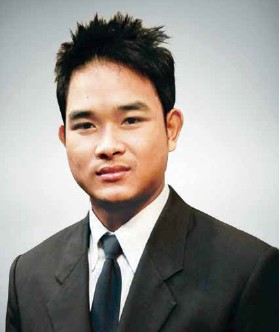The Effect of Reverse Trendelenburg Position on Back Pain after Cardiovascular Angiography and Interventions.
Main Article Content
Abstract
OBJECTIVE: The aims of a pilot randomized controlled trial were to investigate theeffect of reverse Trendelenburg position (RTP) on back pain after cardiovascular angiographyand interventions and to compare incidence of vascular complications at thefemoral access site between experimental and control groups.
MATERIALS AND METHODS: A pilot randomized controlled trial was conductedin 70 patients who underwent cardiovascular angiography and interventions via thefemoral artery and received post procedural care at the intermediate cardiac care unit,Bangkok Heart Hospital from December 2015 to February 2016. The control group (35patients) received standard care, remaining in a supine and flat position for 6-12 hours,with the affected leg straight after the intervention, whereas the experimental group(35 patients) received a 30-45 degrees RTP. Pain score, blood pressure and vascularcomplications were recorded.
RESULTS: The groups were not significantly different in terms of demographic characteristics;age, body weight and height. Back pain scores of the control group had asignificantly higher level than the experimental group (p < 0.001). The incidence ofminor bleeding was 2.9 % in the experimental groups and hematoma < 5 cm. was 2.9 %in the control group. There was no active bleeding in both groups.
CONCLUSION: The findings show that RTP after cardiovascular angiography andinterventions reduce or prevents back pain without increasing the chance of vascularcomplications.
Article Details
This is an open access article distributed under the terms of the Creative Commons Attribution Licence, which permits unrestricted use, distribution, and reproduction in any medium, provided the original work is properly cited.
References
2. Pornratanarangsi S, Boonlert S, Duangprateep A, et al. The effectiveness of “Siriraj Leg Lock” brace on back pain after percutaneous coronary intervention: PCI. J Med Assoc Thai 2010;93 Suppl 1:S35-42.
3. Sulzbach LM, Munro BH, Hirshfeld JW Jr. A randomized clinical trial of the effect of bed position after PTCA. Am J Crit Care 1995;4(3):221-6.
4. Yilmaz E, Gürgün C, Dramali A. Minimizing short-term complications in patients who have undergone cardiac invasive procedure: a randomized controlled trial involving position change and sandbag. Anadolu Kardiyol Derg 2007;7(4):390-6.
5. Pooler-Lunse C, Barkman A, Bock BF. Effects of modified positioning and mobilization of back pain and delayed bleeding in patients who had received heparin and undergone angiography: a pilot study. Heart Lung 1996;25(2):117 23.1996;25(2):117-23.
6. Chair SY, Taylor-Piliae RE, Lam G, et al. Effect of positioning on back pain after coronary angiog- raphy. J AdvNurs 2003;42(5):470-8.
7. Wilson VanVoorhis CR, Morgan BL. Understanding Power and Rules of Thumb for Determining Sample Sizes. Tutorials in Quantitative Methods for Psycho- logy 2007;3 (2):43-50.
8. Farasyn A, Meeusen R. The influence of nonspecific low back pain on pressure pain thresholds and disability. Eur J Pain 2005;9:375–81.
9. Rezaei-Adaryani M, Ahmadi F, Asghari-Jafarabadi M. The effect of changing position and early ambulation after cardiac catheterization on patients’ outcomes: a single-blind randomized controlled trial. Int J Nurs Stud 2009;46(8):1047-53.
10. Coyne C, Baier W, Perra B, et al. Controlled trial of backrest elevation after coronary angiography.Am J Crit Care 1994;3(4):282-8.
11. Chair SY, Thompson R, Li K. The effect of ambu- lation after cardiac catheterization on patient outcome. J Clin Nurs 2007;16(1): 212-14.


